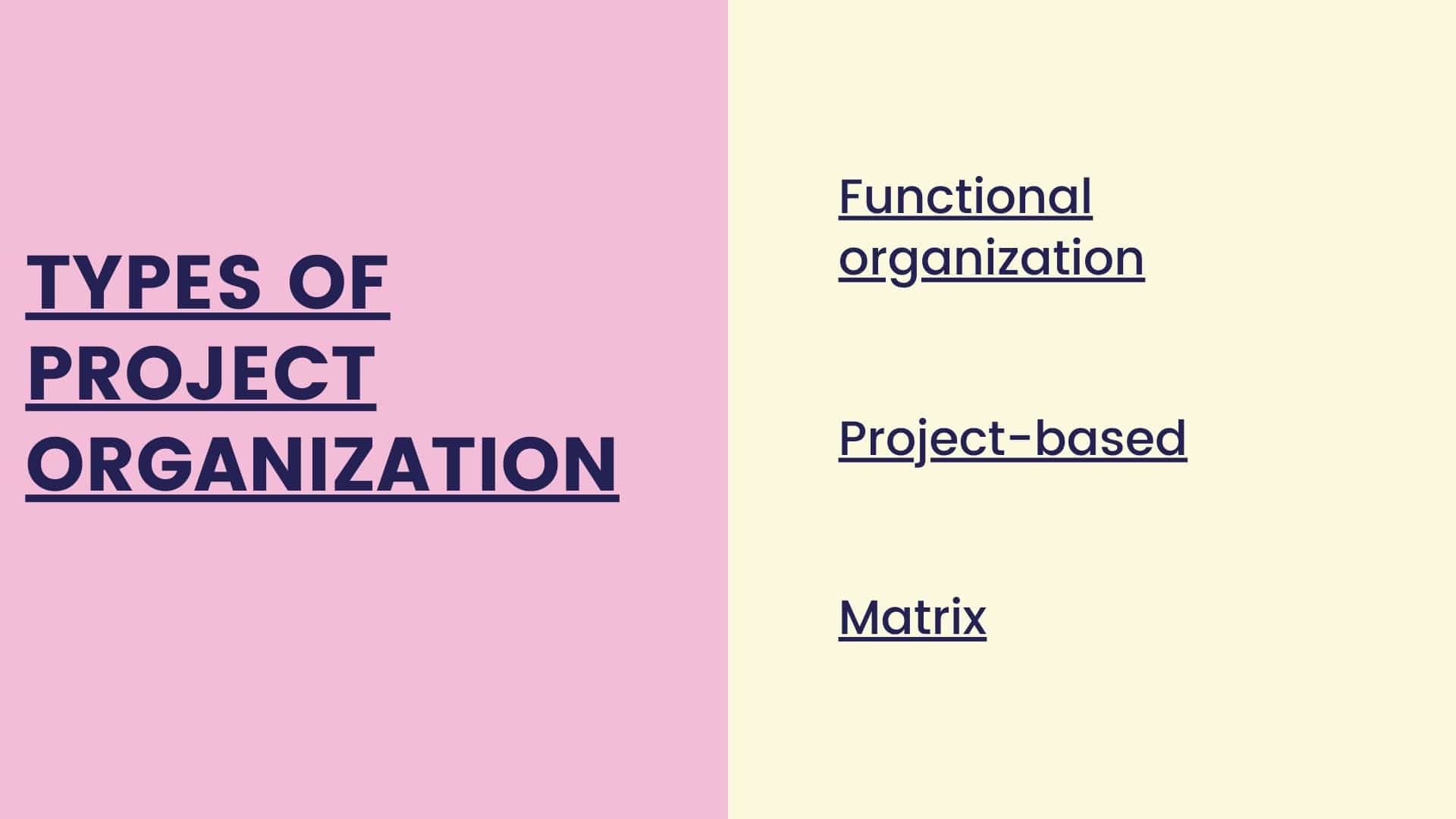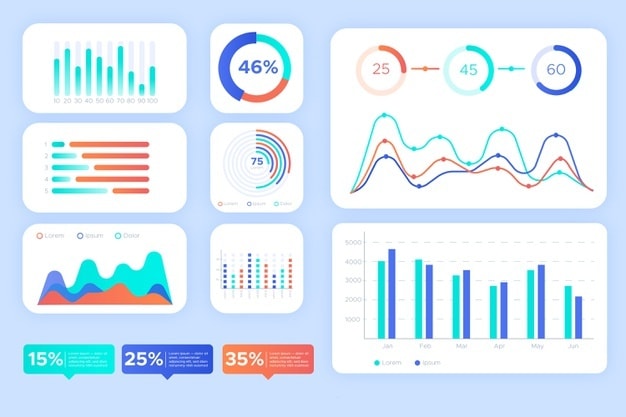
Understanding Project Organization: Types, Categories, and Charts

Project organization is the process of structuring an organization around a specific project This involves identifying personnel, creating a senior management team, assigning project coordinators, identifying stakeholders, and creating a project organization chart There are three types of project organizations: functional, project-based, and matrix Each has its own advantages and disadvantages
Project organization refers to the establishment of a structure within an organization that is tailored to a specific project. It involves determining the processes involved in the project such as planning, timelines, budget, and staff allocation. This structure is developed with the input of employees and experts from different departments.
There are three areas of responsibility and competence in the project organization. These are
Project leadership – It is entrusted with the management side of the project
The implementation aspect of the project falls under the responsibility of the project team. On the other hand, the project board is the decision-making body that holds the responsibility of ensuring the success of the project. This involves crucial decisions such as whether to continue or cancel the project.
Types of project organization
The success of a project heavily relies on its organizational structure, which is determined by various factors such as the type and style of the organization, hierarchy, and workflow. There are different types of project organizations, and the most common ones include:
1. Functional organization
The functional structure is a widely used organizational model where the company is divided into separate departments consisting of employees with similar expertise and knowledge. This structure allows project managers and other resources to work within their respective divisions, such as marketing, sales, accounting, and more.
A functional structure offers several benefits. It works well for small projects and small teams since it allows the function to have complete control and authority over team members and resources.
It is easy to motivate members as they are small in number
It is easy to gain access to experts as they are in the same functional area
It is easy to gather everyone related to a project and have a discussion about a relevant issue
Employees are ready to work in such projects as it gives them the necessary exposure to moving forward
As the team is small, it is possible to limit the project communication tools
The disadvantages of a functional structure are as follows-
It is not easy to gain access to people outside your functional division
Employees are loyal to their team manager instead of the work on the project
It is hard to maintain a strategic focus
2. Project-based
The project manager is solely accountable for the success of each project, given that he has a dedicated team working under him and complete control over the budget. He is answerable to both the project board and the project sponsor, ensuring transparency and accountability throughout the project's lifecycle.
Full control over the team
Strong sense of identity in the team that results in a dominant team culture
Minimum conflict as every member works towards achieving project objectives and goals
Scheduling work is easy
Easy availability of resources
Improves technical leadership as well as project management skills
The disadvantages of project-based organization structure are as follows-
It is an expensive commitment
It is difficult for employees to go back if they are removed from their functional jobs
In some cases, project closure means losing your job
3. Matrix
The integration of project-based and functional organization creates a matrix project organization structure. This structure offers both horizontal and vertical options, providing employees the opportunity to work on a project while also being a part of a functional group.
The matrix organization is of three types
Strong matrix – The project manager has a full-time team and has full authority and control over the team and the project
In a weak matrix structure, the project manager has limited authority and functions more like a coordinator. The team is part-time and the project budget is under his control. On the other hand, in a balanced matrix structure, the project manager shares authority with the functional manager and oversees a part-time team. Both managers jointly manage the project budget.
The advantages of matrix organization are as follows-
Resources are used in an effective manner
Resources can be moved easily between various projects
Individuals, as well as the team members, are responsive by nature
The disadvantages of matrix organization are as follows-
In most cases, you will find a conflict between projects because of resources
Individuals are entrusted with conflicting and different priorities, and this can cause confusion
Some other types of project organization are as follows-
For small business entities or individuals, the simple or organic organization structure suffices as it only requires one owner or a freelancer to manage the workflow. On the other hand, the multi-divisional organization structure is more complex and includes numerous functional divisions that work independently of each other. These divisions consist of individuals with varying skills and are linked by a common thread, which can be geographic or project-based. Each division has its own resources for autonomous work.
Virtual organization structures aim to streamline business processes by outsourcing non-core functions to external organizations while maintaining control over the core business. In this structure, project managers have moderate to low authority and power over budget control, as they work closely with external organizations to ensure successful business operations.
How to make a project organization chart?
Utilizing a project organization chart is beneficial as it allows for clear identification of team roles and responsibilities. In addition, it can aid in determining if additional training is necessary, as well as how to efficiently allocate resources. Furthermore, it can facilitate the involvement of stakeholders, ultimately leading to improved project outcomes. The steps involved in creating a project organization chart are as follows-
1. Identify personnel
In order to effectively manage a project, it is crucial to determine the individuals who are involved in the project scope and possess the ability to make a significant impact on the outcome. Typically, these individuals are key personnel who hold influence over marketers, department heads, sales representatives, support staff, consultants, and even IT personnel.
2. Create a senior management team
To ensure the success of the project, the next crucial step is to form a competent team. The team should consist of the project's clients or sponsors and may also involve experts who can provide valuable guidance and support throughout the project's lifecycle.
3. Assign project coordinators
The third step of the project organization process involves designating project coordinators who will serve as the primary contact for mid and lower-level management. These coordinators will be responsible for executing tasks at this level and ensuring efficient coordination of team activities. Depending on the complexity of the project, there may be several project coordinators appointed, with three being the minimum requirement for overseeing communication, technical, and planning aspects.
4. Note stakeholders
Identify the key stakeholders and try to involve them in the project development
5. Identify training requirements
Efficient handling of a task by a team depends on their possession of the required tools, skills, and knowledge. However, in some instances, this may not be the case. In such scenarios, it is important to identify the training needs of the members who lack the necessary expertise and provide them with the required training. The project coordinator bears the responsibility of managing the task force and ensuring that employees receive the necessary training.
6. Create a project organization chart
To complete the project, it is essential to create a well-structured project organization chart. Take a moment to reflect on the previous steps and consider how the project team can work together efficiently to develop the ideal chart.
Identify the interdependence of roles and responsibilities, and assign them accordingly. Take note of key decision-makers and their specific roles, responsibilities, and assignments for a comprehensive overview. Establish communication and reporting channels to ensure an effective project organization chart. Remember to consider connecting roles for a cohesive team.
Advantages
The advantages of an appropriate project organization model are as follows
Offers employees the opportunity to improve their skills
There is a concentrated effort on project work
Allows the organization to grow and develop
Assist in keeping an eye on strategic goals
Boost the ability to cope with environmental factors
Makes the decision-making process smooth, efficient and fast
Encourages employee specialization
Helps in better use of resources
Easy to meet project deadlines
Assist the employees to grow professionally
Disadvantages
The disadvantages of a project organization model are as follows-
Relationships are not clearly defined
There is a problem in coordination
Duplication of efforts
There is a feeling of insecurity amongst employees in some projects















